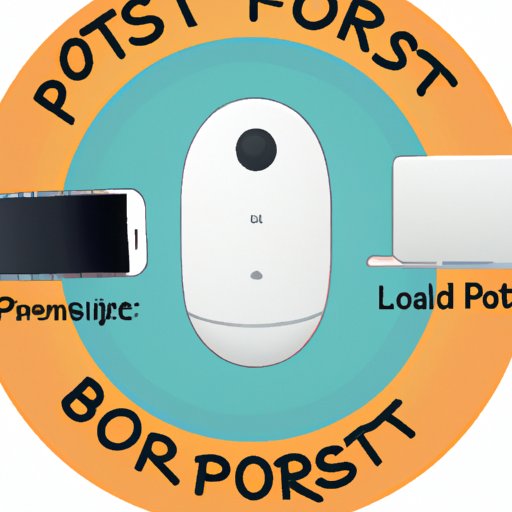Introduction
A personal hotspot is a device that allows you to connect your mobile device (e.g., phone, tablet, laptop, etc.) to the internet using a wireless connection. It serves as a bridge between your device and a cellular network, allowing you to access the internet wherever you are. In this article, we’ll explore how personal hotspots work and provide a step-by-step guide on how to set one up.
A Step-by-Step Guide to Setting Up a Personal Hotspot
Setting up a personal hotspot is fairly simple and straightforward. The first step is to ensure that your device supports the feature. Most modern smartphones and tablets do, but if you’re not sure, check your manual or contact your device’s manufacturer.
Once you’ve confirmed that your device has the necessary hardware and software, you can move on to the next step: activating the personal hotspot feature. This can usually be done through your device’s settings menu. Depending on your device, you may need to configure additional settings such as a password for the hotspot, the number of users allowed to connect, etc.
The final step is to connect your other devices to the personal hotspot. You can do this by selecting the hotspot’s name from the list of available networks on your device. Once you’ve entered the password (if applicable), your device should be connected to the internet.
Exploring the Benefits of Using a Personal Hotspot
Using a personal hotspot has several advantages. First and foremost, it offers increased mobility. With a personal hotspot, you can access the internet wherever you go, as long as there’s a cellular connection available. This makes it perfect for travelling, as you don’t have to worry about finding a public Wi-Fi network.
Another benefit of using a personal hotspot is cost savings. If you already have a data plan for your phone, you can use it to power your hotspot and share the connection with other devices. This eliminates the need to purchase a separate data plan for each device.
Finally, using a personal hotspot can improve the performance of your devices. Since the connection is direct, you won’t have to worry about slow speeds or unreliable connections that are common with public Wi-Fi networks.

Comparing Different Types of Personal Hotspot Devices
There are several types of personal hotspot devices available on the market. Mobile hotspots are small, portable devices that allow you to create a wireless network anywhere you go. They’re powered by a battery, so you don’t need to be near an outlet to use them.
Routers are another type of personal hotspot device. These devices plug into an outlet and typically offer more features than mobile hotspots. They also tend to have a longer range, which makes them ideal for larger spaces.
Finally, USB modems are a type of device that connects to your computer via a USB port. They’re typically used in cars or boats, where outlets aren’t readily available. They’re also much smaller than routers or mobile hotspots, making them easy to store and transport.

How to Troubleshoot Issues with Your Personal Hotspot
If you’re having trouble connecting to your personal hotspot, there are a few steps you can take to try and resolve the issue. First, make sure that your device is within range of the hotspot. If it’s too far away, the connection will be weak or non-existent.
Next, verify that the hotspot is turned on and that all of the necessary settings (e.g., password) are correct. If you’re still having trouble, try restarting both your device and the hotspot. If none of these steps work, you may need to contact your device’s manufacturer for further assistance.

Understanding the Security Implications of Using a Personal Hotspot
When using a personal hotspot, it’s important to understand the potential risks associated with it. Because the connection is shared, anyone within range can potentially access your data. This means that if you’re not careful, your personal information could be compromised.
To protect yourself, it’s important to use a strong password for your hotspot and enable encryption (if available). Additionally, avoid using public Wi-Fi networks whenever possible, as these are even less secure than personal hotspots.
Conclusion
Personal hotspots are a great way to stay connected while on the go. They’re easy to set up and offer a variety of benefits, including increased mobility, cost savings, and improved performance. When using a personal hotspot, however, it’s important to understand the security implications and take the necessary precautions to keep your data safe.
(Note: Is this article not meeting your expectations? Do you have knowledge or insights to share? Unlock new opportunities and expand your reach by joining our authors team. Click Registration to join us and share your expertise with our readers.)
